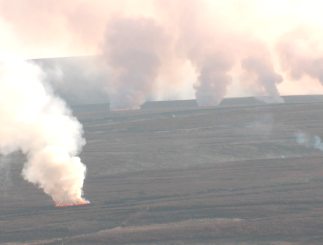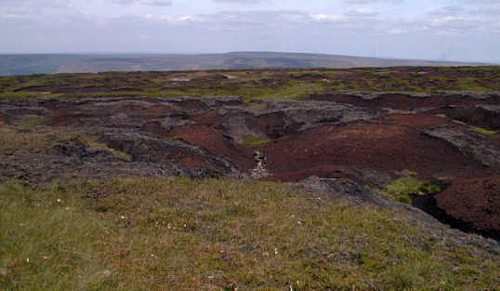
Many moorland areas across the UK (including those in the Dark Peak) are managed by prescribed burning (image courtesy of Jeff Ayres).
Remains of burnt black roots of bilberry, heather and grasses can been seen on peat hags.
Why carry out managed burning?
Burning is carried out mainly to maintain the moors for the benefit of grouse. These birds need a mixture of heather ages to survive - young shoots to feed on and older heather shrubs to nest in.
Moorland Wildfires

Areas of burnt peat (exposed by the burning) appear a dark brown/black colour on ground photographs. These are mostly the result of wildfires Remains of burnt black roots of bilberry, heather and grasses can been seen on peat hags.
Wildfires are accidental and malicious fires. Unlike prescribed burns, they are uncontrolled and and cause major environmnetal damage. The Peak Disrict National Park rangers recorded over 360 in the Park between 1976 and 2006. Causes of wildfires include cigarette butts, barbecues or campfires, litter acting as lenses, prescribed burns getting out of control and lightning strikes. Others fires are set deliberately by arsonists.
Deep burns, which result from severe summer wildfires, cause peat soils to dry up and become hard and crusted. It may be one of the stimuli of peat erosion.
Download publications about reseach at Manchester on wildfire risk.